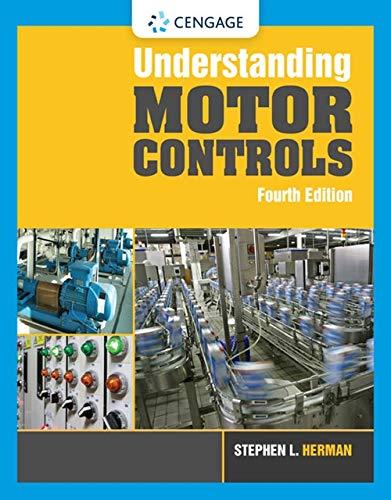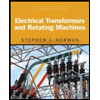1₁-1A-1₂2=0 (3.64) However, an ideal op amp draws negligible current (A=0) and, therefore, I₁=I₂ and the currents through the two resistors are equal. We can write expressions for I and I₂ by using Ohm's law and dividing the respective voltage drop by the resistance ein (1) - eA R₁ e₁ - eo R₂ The left-side term in Eq. (3.65) is current I, and the right-side term is current I₂. We can rewrite Eq. (3.65) as R₂(ein (1) - eA) = R₁ (e₁-eo) Rearranging Eq. (3.66) with the op-amp input voltage e, on the right-hand side, we obtain R₂ein (1) + R₁eo= (R₁ + R₂)еA or, solving for e R₂ R₁ + R₂ Next, substitute Eq. (3.68) into the amplifier gain equation (3.63) KR₂ R₁ + R₂ ein (1) R₁ www eo = K(eBeA) = + R₂ www 12 K ein (1) + eo R₁ R₁ + R₂ KR₁ R₁ + R₂, eo KR₁ R₁ + R₂ Note that eg = 0 as the positive op-amp input terminal in Fig. 3.13 is directly connected to the ground. Equation (3.69) is rearranged with all output voltage terms on the left-hand side to yield ∙eo KR₂ R₁ + R₂ in (1) (3.65) Figure 3.13 Op-amp circuit for Example 3.6. (3.66) (3.67) (3.68) (3.69) (3.70) The output voltage eo of the op amp shown in Fig. 3.12 is eo = K(eB - eA) (3.63)
1₁-1A-1₂2=0 (3.64) However, an ideal op amp draws negligible current (A=0) and, therefore, I₁=I₂ and the currents through the two resistors are equal. We can write expressions for I and I₂ by using Ohm's law and dividing the respective voltage drop by the resistance ein (1) - eA R₁ e₁ - eo R₂ The left-side term in Eq. (3.65) is current I, and the right-side term is current I₂. We can rewrite Eq. (3.65) as R₂(ein (1) - eA) = R₁ (e₁-eo) Rearranging Eq. (3.66) with the op-amp input voltage e, on the right-hand side, we obtain R₂ein (1) + R₁eo= (R₁ + R₂)еA or, solving for e R₂ R₁ + R₂ Next, substitute Eq. (3.68) into the amplifier gain equation (3.63) KR₂ R₁ + R₂ ein (1) R₁ www eo = K(eBeA) = + R₂ www 12 K ein (1) + eo R₁ R₁ + R₂ KR₁ R₁ + R₂, eo KR₁ R₁ + R₂ Note that eg = 0 as the positive op-amp input terminal in Fig. 3.13 is directly connected to the ground. Equation (3.69) is rearranged with all output voltage terms on the left-hand side to yield ∙eo KR₂ R₁ + R₂ in (1) (3.65) Figure 3.13 Op-amp circuit for Example 3.6. (3.66) (3.67) (3.68) (3.69) (3.70) The output voltage eo of the op amp shown in Fig. 3.12 is eo = K(eB - eA) (3.63)
Understanding Motor Controls
4th Edition
ISBN:9781337798686
Author:Stephen L. Herman
Publisher:Stephen L. Herman
Chapter54: The Operational Amplifier
Section: Chapter Questions
Problem 9RQ: Refer to Figure 54–9. If resistor R1 is 470 ohms and resistor R2 is 47 kilohms, what is the gain of...
Related questions
Question
100%
Need assistance with solving equation (3.69) to (3.70). I'm not understanding why output voltage is outside of parenthesis in equation 3.70 and the # 1 is on inside of parenthesis?
This is not part of a graded assignment, I'm reading through the chapters and solving examples.

Transcribed Image Text:1₁-1A-1₂2=0
(3.64)
However, an ideal op amp draws negligible current (A=0) and, therefore, I₁=I₂ and the currents through the
two resistors are equal. We can write expressions for I and I₂ by using Ohm's law and dividing the respective
voltage drop by the resistance
ein (1) - eA
R₁
e₁ - eo
R₂
The left-side term in Eq. (3.65) is current I, and the right-side term is current I₂. We can rewrite Eq. (3.65) as
R₂(ein (1) - eA) = R₁ (e₁-eo)
Rearranging Eq. (3.66) with the op-amp input voltage e, on the right-hand side, we obtain
R₂ein (1) + R₁eo= (R₁ + R₂)еA
or, solving for e
R₂
R₁ + R₂
Next, substitute Eq. (3.68) into the amplifier gain equation (3.63)
KR₂
R₁ + R₂
ein (1)
R₁
www
eo = K(eBeA) =
+
R₂
www
12
K
ein (1) +
eo
R₁
R₁ + R₂
KR₁
R₁ + R₂,
eo
KR₁
R₁ + R₂
Note that eg = 0 as the positive op-amp input terminal in Fig. 3.13 is directly connected to the ground. Equation (3.69) is
rearranged with all output voltage terms on the left-hand side to yield
∙eo
KR₂
R₁ + R₂ in (1)
(3.65)
Figure 3.13 Op-amp circuit for Example 3.6.
(3.66)
(3.67)
(3.68)
(3.69)
(3.70)

Transcribed Image Text:The output voltage eo of the op amp shown in Fig. 3.12 is
eo = K(eB - eA)
(3.63)
Expert Solution
This question has been solved!
Explore an expertly crafted, step-by-step solution for a thorough understanding of key concepts.
This is a popular solution!
Trending now
This is a popular solution!
Step by step
Solved in 1 steps

Recommended textbooks for you

Understanding Motor Controls
Mechanical Engineering
ISBN:
9781337798686
Author:
Stephen L. Herman
Publisher:
Delmar Cengage Learning

Electrical Transformers and Rotating Machines
Mechanical Engineering
ISBN:
9781305494817
Author:
Stephen L. Herman
Publisher:
Cengage Learning

Understanding Motor Controls
Mechanical Engineering
ISBN:
9781337798686
Author:
Stephen L. Herman
Publisher:
Delmar Cengage Learning

Electrical Transformers and Rotating Machines
Mechanical Engineering
ISBN:
9781305494817
Author:
Stephen L. Herman
Publisher:
Cengage Learning